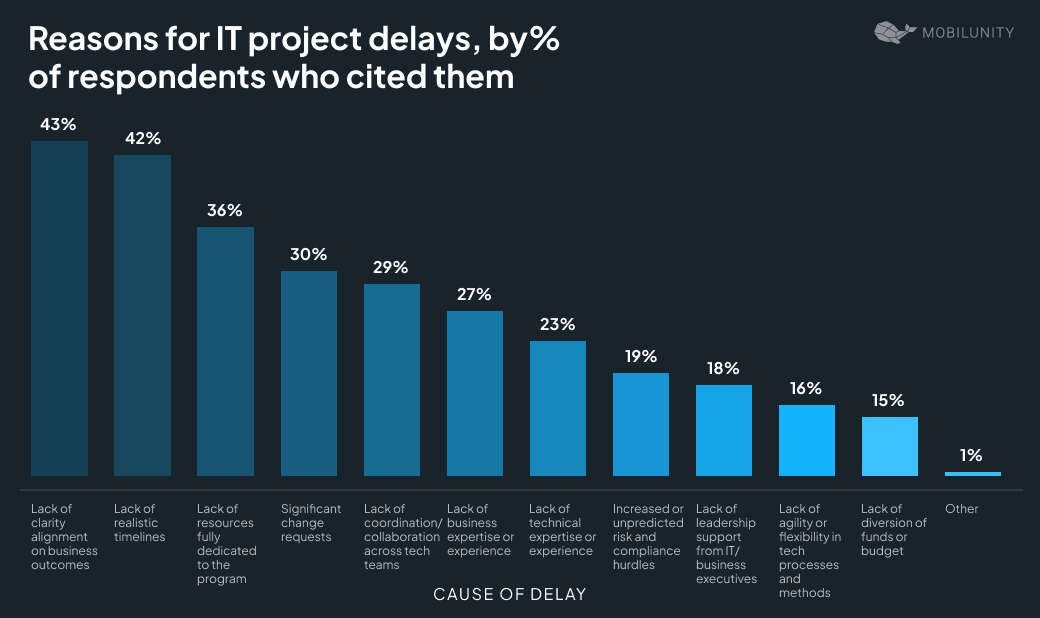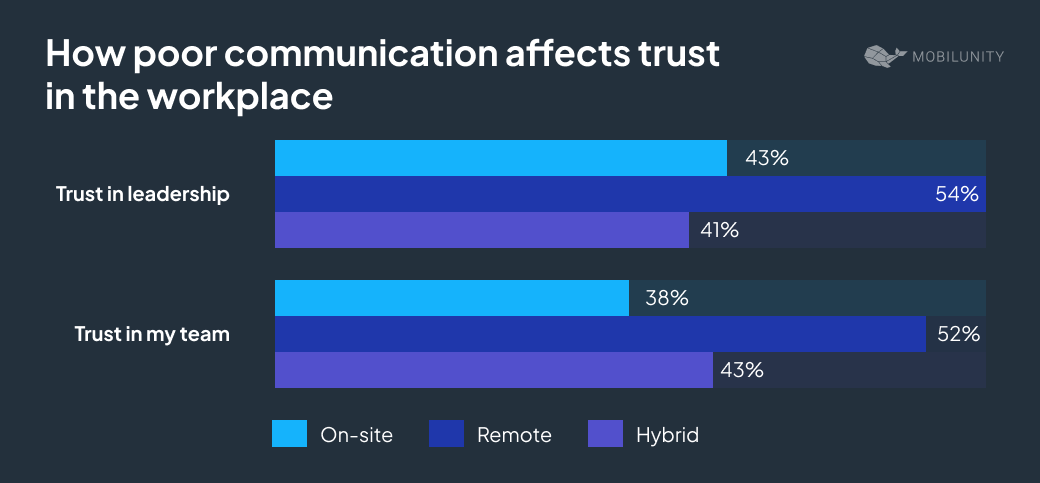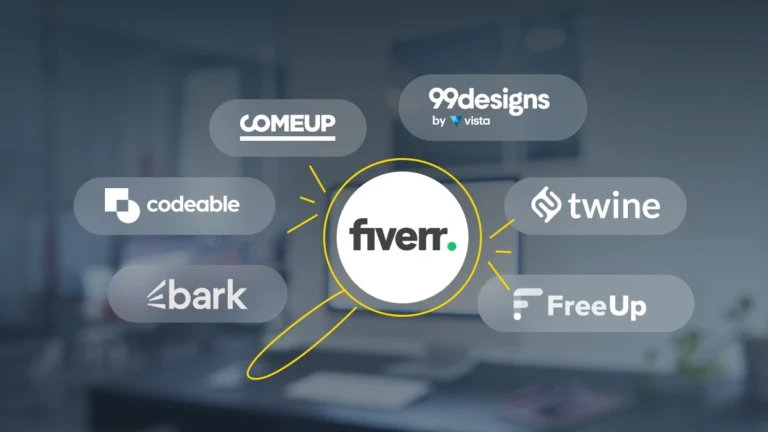Team Extension: What Is It and How It Helps Your Business Grow
51% of interviewed global business and technical-side C-suite executives said that more than 30% of their software development projects suffered from missed deadlines or budget overruns (BCG).
They named the lack of dedicated resources as the third reason for IT project delays following unclear business outcomes and unrealistic timelines.
Source: BCG
When requirements for your tech product grow, it’s vital to stay scalable and flexible. One of the key factors that don’t let you compromise performance as workload grows is skilled developers.
This guide focuses on the benefits, challenges, and steps of team extension. It explains how business owners can cut costs, boost revenues, and improve customer experience by hiring external tech experts.
Understanding Team Extension
Expanded teams gain popularity, as they empower organizations with a skilled workforce quickly and cost-effectively.
Here’s how this strategy works.
Definition and Concept
Team extension means adding external IT experts to your in-house developers. Businesses turn to this option when they have to cover a skill gap or need an extra workforce.
For EU and US companies, employing local tech talents is often costly and time-consuming. So, they look for programmers in other countries and hire them through vendors.
Such agents offer team extension services and are called hiring providers. These companies help you find, contract, and retain your external team members as if they were your employees.
Like with in-house software developers, you manage the workload and control their performance. The hiring provider, though, helps monitor the engagement and motivation of your engineers.
With team extension, your vendor is responsible for hiring IT specialists and ensuring their HR, payroll, and legal support.
Hiring remotely, which is sometimes referred to as outstaffing, is closely tied with outsourcing, as both models assume contracting and maintaining remote experts. Still, the difference is significant — the responsible party.
In the traditional outsourcing model, you delegate tasks or entire business functions without controlling who does what. You pay for getting the work done, and your provider is in charge of the results.
NOTE! The Managed Team Extension model is somewhere in between. In it, the parties share (often not equally) the accountability for project outcomes. They set clear roles and responsibilities to avoid misunderstandings.
Hint: Team extension gives you the people, while outsourcing brings the turnkey solution.
| Outstaffing | Outsourcing | |
| What do I get? | Skilled software developers with back-office support | A ready-to-use software development solution |
| Who is responsible for the results? | Your PM sets tasks for your external team members and controls their work | Your outsourcing partner manages the project from A to Z |
| How long does it take? | It usually takes 5-8 weeks to hire remote programmers | Starting from 4-12 weeks, on average, depending on your project scope |
How It Works
Your team growth starts with identifying skill gaps. Then you choose a reliable provider, interview vetted candidates, and contract remote developers. The hiring phase usually takes around 5-8 weeks and ends with the onboarding of new team members.
The next step is their integration with your in-house staff and into the workflow, which includes:
- Giving access to systems and instruments
- Setting communication channels
- Explaining the project scope, goals, and company structure
- Supporting the newcomers during the first few weeks.
IT consulting firms that provide team extension services help you with these processes. Their experts not only find, hire, and onboard remote tech talents for you. They also retain developers by constantly monitoring and timely addressing their engagement and motivation.
Pro Tip: If you see value in the retention service, choose hiring vendors over EOR (Employer of Record) or freelancers.
Benefits of Team Extension
How does covering skill gaps with remote developers help your company?
Here are the benefits you get.
Scalability and Flexibility
Once your hybrid tech team embraces all the aspects of the product, your business is ready for sudden or sustainable scaling. Your developers handle all the workload that increases together with the demand for your product.
With a proficient development team you create a better customer experience, generate additional revenue streams, and adjust to quickly changing market needs.
This way, the expanded team lets you handle more users, implement new product features, and meet changing shareholders’ expectations, all crucial aspects of your business scaling strategy
Once you need more developers throughout the project, your vendor is ready to hire them, usually within weeks.
The team extension model also allows businesses to scale down promptly and put their remote staff “on hold” as they’re free from long-term commitments, while augmenting your IT staff with specialized external resources as needed.
Access to Specialized Skills
When software engineers with required niche skills aren’t available locally, tapping into a global talent pool is the solution.
Through nearshoring (hiring from neighboring countries) and offshoring (hiring from distant locations) models you have many more experts to choose from.
No matter how complex or specific your project scope is, the vendor can promptly find and contract remote developers with rare combinations of skills. For instance, AI and Machine Learning, cybersecurity, Data Science, cloud, etc.
Cost Efficiency
For companies based in the US and Western Europe, hiring software engineers from Eastern Europe, Asia, LATAM, the Middle East, and other offshore destinations is more cost-effective.
The gross salaries of tech professionals there are significantly smaller because of the lower cost of living and taxes. Here are the annual remunerations of full-time software developers in Europe and Latin America (according to Glassdoor).
| Countries | Annual Salary |
| USA | $130,452 |
| Austria | $67,552 |
| UK | $55,899 |
| Ukraine | $39,348 |
| Hungary | $30,954 |
| Romania | $27,709 |
| Poland | $40,929 |
| Brazil | $20,173 |
| Mexico | $23,320 |
| Chile | $27,344 |
| Argentina | $13,898 |
Source: Glassdoor
Hiring a full-time software developer in Ukraine is ~70% less expensive than in the USA, ~40% — than in Austria, and ~30% — than in the UK.
If a US company hires programmers in Mexico, it saves ~82%, while with Brazilian developers the economy rises to ~85% and goes up to impressive ~90% in Argentina.
Clutch shows hourly rates for custom software development. Part-time software engineers from the United Kingdom and Poland will cut the costs twice for a US company. The developers from the Philippines, Ukraine, Spain, and Mexico offer up to 75% off similar costs in Australia, Canada, and the US.
Source: Clutch
Accelerated Time-to-Market
A committed and productive team speeds up development cycles and accelerates project delivery. Gallup found that businesses with engaged employees were 23% more profitable than their competitors with poorly engaged workers.
With a high-performing team, you can do more in less time by streamlining and prioritizing development tasks. This advantage lets you get a higher ROI and grow your market presence.
In the world of startups, an extended team speeds up the MVP (Minimum Viable Product) delivery. Founders explore if the product resonates with their clients and meets their requirements. With prompt adjustments to the market interest, they can minimize losses.
Improved speed to market lets you adapt to market changes, client requirements, and tech advancements faster. With innovative products that appear on the market first, companies set premium prices and get higher profits.
NOTE! A quick product launch reduces the risk of being copied. It also improves your brand’s reputation since you rapidly release its updated versions.
Enhanced Collaboration and Knowledge Transfer
Tech professionals from other countries bring specific knowledge and insights, introducing unexpected perspectives into your workflow. Their diverse skill set and backgrounds allow your expanded team to tackle complex projects.
Team members learn from each other and gain new skills, which fosters collaboration and boosts their performance. Developers come up with innovative ideas and find original solutions incited by their extensive background.
Here are two examples of how powerful extended teams are:
- Bowbridge, a German company providing SAP cybersecurity software, urgently needed a full-time JavaScript developer to release one of its products on time. Mobilunity quickly hired a skilled professional who joined its core IT team.
- The tech team of Trendsetting, a UK-based digital agency, lacked the expertise to complete time-sensitive projects. The company needed external programmers’ short-time engagement with an intensive workload.
Mobilunity vetted part-time developers for them, which ensured timely project completion. Trendsetting CTO says:
Challenges of Team Extension
While tech team growth offers a bunch of advantages, including lower salaries and faster release of your product, you can face a few difficulties, too.
Cultural and Communication Barriers
If you’re a US or EU-based company, hiring developers from remote locations like Vietnam, India, Pakistan, Philippines, etc. can be challenging. Despite the attractive hiring costs, the cultural barrier might be an issue.
You may face:
- Unusual accents
- Different mentality
- Unexpected reactions
- Lack of initiative
- Avoiding expressing opinions
- Mimics and tone that you can misunderstand.
Pro Tip: After 10+ years of building extended and dedicated development teams, we recommend contracting nearshore software engineers rather than offshore ones.
Hiring tech experts from neighboring countries minimizes cross-cultural differences.
For instance, Ukrainian programmers have experience working with Western companies and better understand their requirements. American and European managers appreciate their ability to express and defend ideas when trying to improve the product.
Developers from Eastern Europe are open-minded, responsible, and stress-resistant. Their facial expressions and body language are similar to those of their colleagues from the US, Canada, Switzerland, France, and Germany. Employers understand their postures, appearance, gestures, and other ways of nonverbal communication.
The same is true if your company is based in the Asia Pacific region. In addition to similar time zones, developers from India, Philippines, Vietnam, Pakistan, Bangladesh, and other APAC countries are a better fit. They have a deep respect for hierarchy, reserved approach, and a reluctance to discuss instructions from their managers.
Asian software engineers are perfect collaborators due to their focus on collectivism but have a more flexible approach to time management.
Integration and Team Assimilation
It takes up to several weeks for your new engineers to become fully productive. They have to explore your product despite knowing most of its tech stack.
Understanding the project scope and context, learning the “tribal knowledge”, and step-by-step integration takes time.
Pro Tip: Assign a guide to explain the tech stack to the new developers instead of asking them to research it.
During the first week, newcomers perform simple tasks. Then a mentor provides more complicated assignments with detailed implementation plans. At the end of week 3, your programmers ask fewer questions and get fewer instructions.
After weeks 4-5 remote programmers craft their own implementation plans and easily navigate the project. By this time, most of the common tasks get tackled, and the new hires become fully integrated.
Clear communication and leadership are essential for the smooth and effective assimilation of remote engineers. New extended team members appreciate openness, support, and guidance to get engaged and motivated.
Forbes shows how ineffective communication affects collaboration.
Source: Forbes
Ongoing Management and Costs
Your team extension services provider runs plenty of back-office activities related to your remote workers. So, on top of gross compensation, your vendor usually adds the following costs to your regular invoices:
- Accounting. Calculating and transferring salaries and taxes. Preparing reporting documents and sending data to authorities. Managing sick leaves and vacations.
- Legal. Creating cooperation contracts and NDAs that conform with local regulations.
- Cybersecurity. Ensuring your systems and IT infrastructure are protected.
- Office infrastructure (optional). If you prefer your developers to stay in the office, providers arrange the working space and infrastructure for your team.
- Retention. Regular interviews with HR specialists to anticipate potential issues. Arranging activities and supporting the team spirit.
The ongoing management of your team is vital. Covered administrative tasks allow you to focus on the project, while retention ensures your software engineers are enthusiastic and dedicated.
So, these costs add to your effective and long-term cooperation.
3 Practical Steps to Implement Team Extension
Once you decide to have a bigger team, that’s what you have to do next.
1. Defining Project Requirements
The outcomes of your project depend on how clear you are about its goals. Thoroughly captured, aligned with stakeholders, and prioritized requirements let you achieve these goals faster.
Outline the functionalities and features of your future product. Determine the technical requirements, including architecture security, software, hardware, etc.
Once the project scope is ready, you check which aspects your core team covers and which expertise it lacks.
Here are 3 steps to identify the skill gap:
- Define the required roles. Smaller teams require 4-5 experts (1-2 developers, a QA specialist, a UI/UX designer, and a PM). For complex scopes, you also need a product owner, a business analyst, a tech team lead, etc.
- List competencies for each role. Write out programming languages, databases, SQL, frameworks, CMS, IDEs, and other relevant technology stacks. Mention critical soft skills like communication and problem-solving.
- Figure out which expertise your employees possess. Run interviews, surveys, and assessments to structure the knowledge of your staff.
Now, compare the required skills against the competencies of your in-house team. From there, you see which technologies and how many external developers you need to deliver the project on time.
Hint: You need a PM or a Tech Lead to manage the work of your extended development team.
2. Choosing the Right Team Extension Partner
Think of the location of the remote developers you plan to work with. Consider time zones, English proficiency, and possible cultural differences. The mentality of your future workers has to be similar to yours, so you understand their mimics, tone, facial expressions, etc.
Once you define the country or area, research for a local hiring partner. Use online marketplaces like Clutch, G2, and their alternatives.
Since most reliable outsourcing and team extension providers have blogs, search queries like “Hire Java Developers” and similar return relevant results.
The criteria for selecting a reliable IT partner are:
- Years in the market
- Relevant projects in the portfolio and their geography
- Your industry experience
- Vendor size
- Average partnership duration
- Approximate number of weeks to close a vacancy
- Cooperation format
- Transparent cost structure
- Readiness to adapt to your needs
Mobilunity’s Founder Cyril Samovsky recommends to ask any potential vendor these questions:
- What pricing model do you offer? Is it per head, per month, or hourly? Is it cost-plus? Deliverables-based?
- Is your pricing model transparent? Will I know the developer’s gross rate and your service fee?
- What is the current size of your company? How fit does it look to the client’s business size and needs?
- Do you typically hire people from the market or source them from your bench?
- What is the usual timeframe for your team to fill a vacancy?
- Can I interview the candidates you provide in English without a translator or intermediary?
- Once the team is sourced and starts working on the project, will they be directly managed by me, without your Project Manager in between?
3. Onboarding and Integration
After you hire an extended development team and complete all the paperwork, it’s time to integrate the newcomers into your workflow.
Your hiring partner launches this process by following the best practices. It ensures your developers feel comfortable from day one of your cooperation.
The vendor’s HR manager assigned to your team and the team manager should:
- Make sure the new members have access to the tools and systems necessary for work and instant communication.
- Initiate sending employee handbooks or onboarding materials. So, your remote developers learn the company structure and policies.
- Share the plan for the first week or two.
- Arrange the appointment of a mentor who helps new engineers explore the existing code and product infrastructure.
- Encourage knowledge transfer and open communication.
Weekly or biweekly catch-up and 1:1 meetings with retention managers are critical for effective and long-term cooperation with remote developers in an dedicated team model.
To Sum Up
Team extension brings scalability, accelerated time-to-market, and lower costs to your company. Ongoing expenses, integration, and communication barriers are common challenges businesses face when hiring remote developers.
Still, hybrid teams leverage diverse backgrounds and demonstrate enhanced collaboration that results in your business growth and increased revenues.
Disclaimer: All salaries and prices mentioned within the article are approximate numbers based on the research done by our in-house Marketing Research Team. Please use these numbers as a reference for comparison only. Feel free to use the contact form to inquire on the specific cost of the talent according to your vacancy requirements and chosen model of engagement.

















Insight
“On average, IT projects overall — regardless of size — exceeded their budgets by 75%, overran their schedules by 46%, and generated 39% less value than predicted.” (McKinsey)